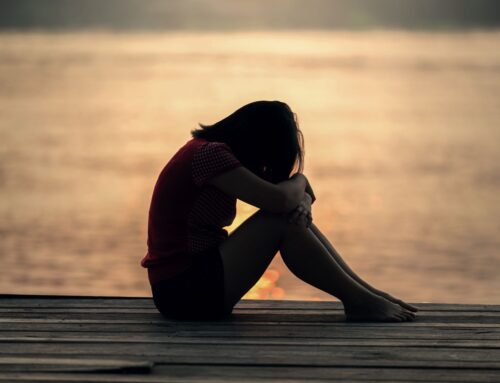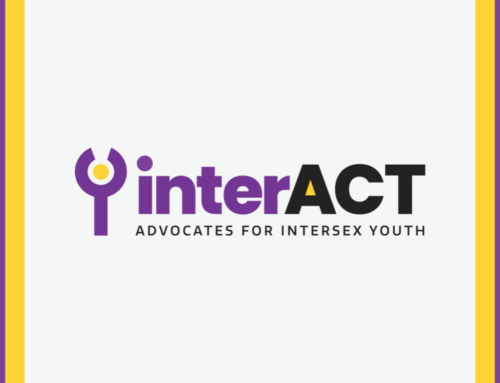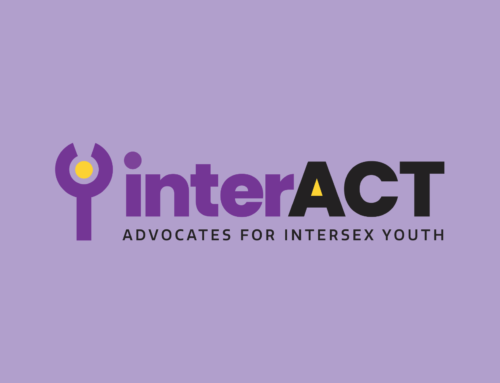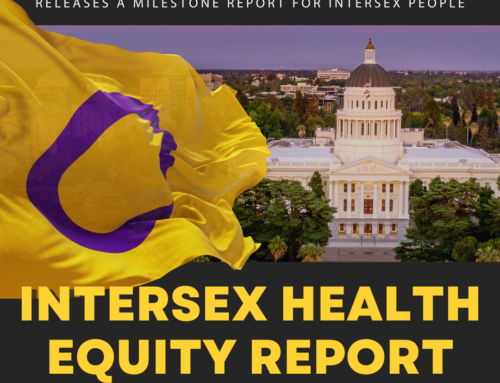December 1, 2018
to Mr. António Guterres
UN Secretary General
Secretary-General of the United Nations
Note: This letter was written to support broader civil society action in relation to the proposed Convention in an effort led by CUNY, MADRE, and OutRight Action International.
Re: “Gender” in the Draft Crimes Against Humanity Convention
Dear International Law Commission Members,
We write on behalf of organizations based in Australia and the United States dedicated to protecting the human rights of intersex people. We have joined together regarding the draft crimes against humanity (CAH) convention pending with the International Law Commission to urge the Commission to remove the definition of gender from Article 3[3] of the draft convention or to replace it with a new definition that adequately acknowledges the diverse realities of our constituency.
“Intersex” refers to the up to 1.7 percent of people around the world born with sex characteristics– including gonads, genitals, hormones, and chromosomes – that do not fit typical binary notions of “male” or “female” bodies. We have extensive experience, both personally and professionally, with abuses that face this population due to misunderstanding and bias rooted in a lack of acceptance for our differences. In particular, medically unnecessary “normalization surgeries” are extremely common in the intersex community as doctors attempt to “correct” healthy variations simply because intersex bodies do not conform to misinformed expectations for either male or female children.
These surgeries, when performed in infancy and therefore without the consent of the patient, have been condemned by the American Academy of Family Physicians, the World Health Organization, Physicians for Human Rights, Human Rights Watch, Amnesty International, Lambda Legal, the ACLU, the Trevor Project, GLSEN, the Gay & Lesbian Medical Association (GLMA), and every intersex-led organization in the world focusing on this population. Multiple United Nations treaty committees and expert bodies have condemned these surgeries, some even likening them to a form of torture or ill-treatment.1 However, in most countries, these operations
are not explicitly addressed by domestic law and remain common practice.
As currently formulated, the definition of “gender” imported into the draft convention from the Rome Statute does not explicitly mention the existence of intersex people, despite our making up close to 2% of the population– and this leaves us concerned that the redressability of non-consensual genital surgeries and sterilizations, which certainly could qualify as a crime against humanity under Article 3[3]2, may not be clear to all states. The definition reads: “it is understood that the term ‘gender’ refers to the two sexes, male and female, within the context of society.”
Although the definition does not exclude intersex people from protection, it is clear that the needs of those with variations in their sex characteristics were less understood when the Rome Statute was written. It is important for intersex people, as well as our transgender and gender non-conforming peers, to be clearly accounted for in the instruments intended to safeguard us all. The Commission has an opportunity to eliminate uncertainty either by amending the definition of “gender” to be more accurate and expressly inclusive, or by striking the arguably unnecessary definition from the text of the convention3 and allowing “gender” an unrestricted interpretation.
Simply striking the definition would put “gender” on the same footing as other protected classes insofar as it would no longer be modified by what some would perceive as a limiting construction. We believe that “gender,” standing alone, can be interpreted to encompass all aspects of sex and gender, including sex characteristics, gender identity, and gender expression in addition to traditional notions of “the two sexes.” Therefore, this would be a sufficient solution to address our concerns. However, the Commission could instead replace the current definition of “gender” with a more accurate and inclusive definition as a way of maximizing the clarity of the convention’s applicability. If the Commission were to amend the definition of gender, we would propose a definition recognizing that the term ‘gender’ may refer to an individual’s gender identity, gender expression, and/or sex characteristics, including chromosomes, genitals, hormones, and reproductive organs, whether or not these attributes match expectations for the individual’s real or perceived gender.
The approach described above would better lend unambiguous protection to intersex people and other marginalized groups whose standing under the current definition of “gender” may be less explicit. We therefore recommend to the International Law Commission that the definition of
gender either be revised accordingly or alternatively removed from the draft crimes against humanity convention altogether.
Sincerely,
- Kimberly Zieselman, Executive Director, on behalf of interACT: Advocates for Intersex Youth
- Morgan Carpenter, Co-Executive Director, on behalf of Intersex Human Rights Australia
1 Concluding observations of the UN Committee against Torture, Germany, CAT/C/DEU/CO/5, December
12, 2011; CAT observations on the seventh periodic report of Switzerland, CAT/C/CHE/CO/7, September
7, 2015; CAT Concluding observations on the sixth periodic report of Austria, CAT/C/AUT/CO/6, January
27, 2016; CAT Concluding observations on the fifth periodic report of China with respect to Hong Kong,
China, CAT/C/CHN-HKG/CO/5, February 3, 2016; CAT Concluding observations on the combined sixth
and seventh periodic reports of Denmark, CAT/C/DNK/CO/6-7, February 4, 2016; CAT, Concluding
observations on the seventh periodic report of France, CAT/C/FRA/CO/7, June 10, 2016. UN Committee
on the Rights of the Child, “Concluding observations on the fifth period report of New Zealand,” CRC/C/NZL/CO/5, September 30, 2016; CRC “Concluding observations on the second periodic report of
South Africa,” CRC/C/ZAF/CO/2, September 30, 2016; CRC “Concluding observations on the combined second to fourth periodic reports of Switzerland,” CRC/C/CHE/CO/2-4, February 26, 2015; CRC
“Concluding observations on the combined fourth and fifth periodic reports of Chile,” CRC/C/CHL/CO/4-5, October 30, 2015; CRC “Concluding observations on the fifth periodic report of France,”
CRC/C/FRA/CO/5, January 29, 2016; CRC “Concluding observations on the combined third and fourth periodic reports of Ireland,” CRC/C/IRL/CO/3-4, January 29, 2016; “Concluding observations on the fifth
periodic report of the United Kingdom of Great Britain and Northern Ireland,” CRC/C/GBR/CO/5, June 3, 2016; CRC “Concluding observations on the third to fifth periodic reports of Nepal,” CRC/C/NPL/CO/3-5,
June 3, 2016. United Nations Committee on the Rights of Persons with Disabilities, “Concluding observations on the initial report of Germany,” CRPD/C/DEU/CO/1, May 13, 2015; UNCRPD,
“Concluding observations on the initial report of Chile,” CRPD/C/CHL/CO/1, April 13, 2016; UNCRPD,
“Concluding observations on the initial report of Italy,” CRPD/C/ITA/CO/.1, August 31, 2016. United
Nations Committee on the Elimination of Discrimination against Women, “Concluding observations on the
combined fourth and fifth periodic reports of Switzerland,” CEDAW/C/CHE/CO/4-5, November 18, 2016;
UN CEDAW, “Concluding observations on the combined seventh and eighth periodic reports of France,”
CEDAW/C/FRA/CO/7-8, July 22, 2016. 2 “For the purposes of the present draft articles, ‘crime against humanity’ means any of the following acts
when committed as part of a widespread or systemic attack directed against any civilian population, with
knowledge of the attack: … (g) rape, sexual slavery, enforced prostitution, forced pregnancy, enforced
sterilization, or any other form of sexual violence of comparable gravity; … (k) other inhumane acts of a
similar character intentionally causing great suffering, or serious injury to body or to mental or physical
health.” (emphasis added) 3 No other protected class is defined in the draft convention.





